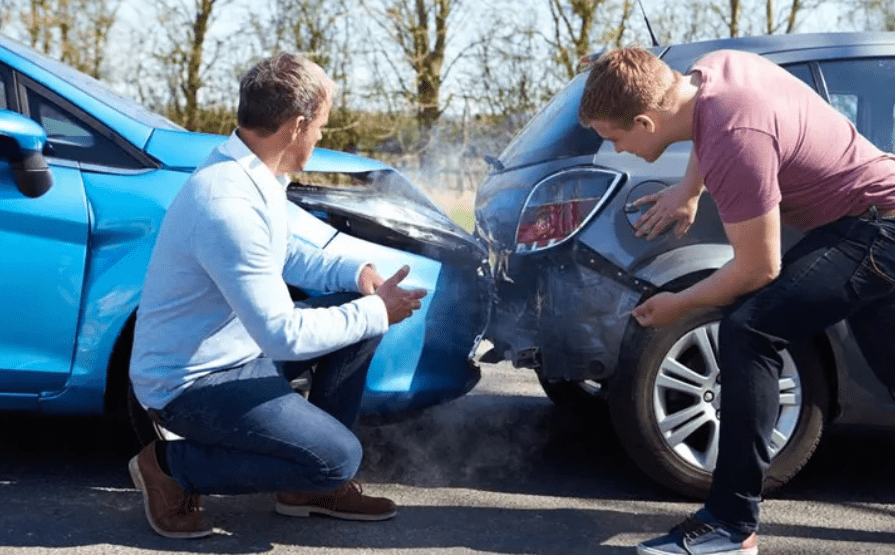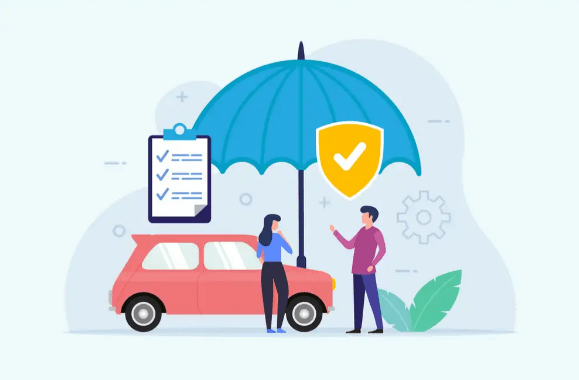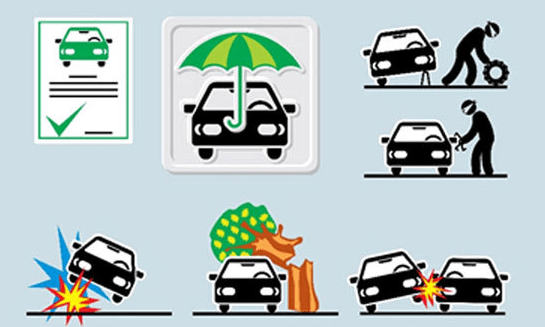When shopping for car insurance, you’ll often hear the term “full coverage” used. Many drivers assume that full coverage means their car is insured for every possible situation, but this isn’t entirely true. Full coverage auto insurance typically refers to a combination of several types of insurance that provide more comprehensive protection than the minimum liability coverage required by law.
Understanding what full coverage actually entails, who should buy it, and what it covers is crucial for making an informed decision about your auto insurance policy. This article will break down what full coverage auto insurance is, its components, what it does and doesn’t cover, and who should consider purchasing it.
What Is Full Coverage Auto Insurance?
Full coverage auto insurance is not a specific policy offered by insurers. Instead, it refers to a combination of insurance coverages designed to provide broad protection for both you and your vehicle. Typically, full coverage includes:
- Liability Insurance: This is the core of any auto insurance policy and is often required by law. Liability insurance covers the costs of injuries or damage you cause to other people or their property in an accident. However, it does not cover your own injuries or damages to your vehicle.
- Collision Coverage: Collision insurance helps pay for repairs to your car if it’s damaged in an accident, regardless of who is at fault. This can include collisions with other vehicles, objects like trees or guardrails, or even accidents involving single-car rollovers.
- Comprehensive Coverage: Comprehensive insurance covers damage to your car from non-collision incidents. This includes things like theft, vandalism, weather-related damage (such as hail or floods), and damage from hitting animals.
- Uninsured/Underinsured Motorist Coverage: This provides protection if you’re in an accident with a driver who either doesn’t have insurance or doesn’t have enough coverage to pay for your damages or injuries. Some states require this type of coverage, while in others it is optional.
- Personal Injury Protection (PIP) or Medical Payments (MedPay): These cover medical expenses for you and your passengers after an accident, regardless of who is at fault. PIP can also cover lost wages and other related expenses, while MedPay is more focused on medical costs.
Together, these coverages make up what is commonly referred to as “full coverage.” However, even with these elements, full coverage doesn’t protect against every possible scenario (for example, regular maintenance issues or mechanical breakdowns), but it offers far more protection than the minimum liability requirements mandated by most states.
What Does Full Coverage Auto Insurance Cover?
While the term “full coverage” might suggest that everything is covered, there are specific areas where full coverage auto insurance is effective. Here’s a breakdown of what each component typically covers:
1. Liability Insurance
Liability insurance covers:
- Bodily Injury Liability: Medical expenses, lost wages, and even legal fees if you’re sued after an accident in which you’re at fault.
- Property Damage Liability: Covers the costs of damage to another person’s vehicle or property (such as fences, mailboxes, or buildings) if you’re at fault in an accident.
Example: If you rear-end another vehicle, causing damage to their car and injuries to the driver, your liability insurance would cover the cost of repairing their vehicle and their medical expenses (up to your policy limits).

2. Collision Coverage
Collision coverage helps with:
- Repairs to Your Vehicle: Regardless of fault, if your car is damaged in a crash with another car, object, or even in a rollover, collision insurance will cover repair costs or the actual cash value of your car if it’s totaled.
Example: If you accidentally hit a tree while backing out of a driveway, collision coverage would pay for the repairs to your vehicle, after you pay the deductible.
3. Comprehensive Coverage
Comprehensive insurance covers:
- Theft or Vandalism: If your car is stolen or damaged by vandalism, comprehensive insurance steps in.
- Weather Damage: Damage caused by natural disasters such as hail, floods, or windstorms.
- Animal Collisions: If you hit a deer or other animal while driving, comprehensive coverage will help pay for repairs.
Example: If a hailstorm severely damages your car or it gets stolen from a parking lot, comprehensive coverage would help cover the repair or replacement costs.
4. Uninsured/Underinsured Motorist Coverage
This coverage protects you in cases where:
- Uninsured Drivers: If the person who causes an accident has no insurance, this coverage will help cover medical bills and repair costs.
- Underinsured Drivers: If the at-fault driver has insurance, but their policy limits are too low to cover all of your damages, this coverage will fill in the gap.
Example: If you’re hit by a driver who only has $10,000 in liability coverage but the total damages amount to $30,000, your underinsured motorist coverage would cover the remaining $20,000.
5. Personal Injury Protection (PIP) or Medical Payments (MedPay)
This provides coverage for:
- Medical Bills: Pays for hospital bills, surgery, or other medical expenses for you and your passengers, regardless of fault.
- Lost Wages: In the case of PIP, it may also cover lost wages if you are unable to work due to injuries sustained in an accident.
Example: If you’re injured in a car accident and need medical attention, PIP or MedPay will help cover your hospital bills, rehabilitation costs, or even lost wages if you can’t work while recovering.
What Does Full Coverage Auto Insurance NOT Cover?
Even though full coverage auto insurance offers more protection than basic liability policies, it still doesn’t cover everything. Here are a few key areas where full coverage falls short:
- Maintenance and Wear and Tear: Routine maintenance like oil changes, tire rotations, or brake replacements aren’t covered. Damage from normal wear and tear, such as tire blowouts, is also excluded.
- Mechanical Breakdown: If your engine fails due to mechanical issues unrelated to an accident, full coverage won’t cover repair costs. Mechanical breakdown insurance (MBI) or extended warranties are typically needed for this type of coverage.
- Use of Your Car for Business Purposes: Standard auto insurance (including full coverage) typically doesn’t cover vehicles used for business, such as ridesharing (Uber, Lyft) or delivery services. You’ll need a commercial auto policy or rideshare insurance for that.
- Custom Parts or Equipment: If your car has custom features (like a custom paint job, specialized wheels, or performance parts), these might not be fully covered under a standard full coverage policy. You would need an endorsement or additional coverage for custom parts.
- Racing or High-Risk Driving Activities: If you’re using your car for racing or other high-risk activities, any damages incurred during those events likely won’t be covered by full coverage.
Who Should Buy Full Coverage Auto Insurance?
Full coverage auto insurance is a good idea for certain types of drivers and in specific situations. Here are the people and scenarios where full coverage is highly recommended:
1. Drivers with New or Expensive Vehicles
If you have a new or high-value vehicle, full coverage is a smart choice. The cost to repair or replace a newer car after an accident can be significant, and full coverage ensures you’re not stuck with those high costs. Luxury or sports car owners should also strongly consider full coverage, as these cars often have more expensive parts and repair costs.
2. Drivers with a Car Loan or Lease
If you’re financing or leasing a car, the lender or leasing company will typically require full coverage. This ensures that the car is fully protected in case of damage or theft. Until you fully own the vehicle, you likely won’t be able to get by with just liability insurance.

3. People Living in Areas Prone to Theft or Natural Disasters
Comprehensive coverage protects against non-collision incidents like theft, vandalism, or weather-related damage. If you live in an area prone to car theft, flooding, or severe storms, having full coverage provides extra security against these risks.
4. Drivers with High-Value Custom Vehicles
If your car has been modified with expensive custom parts or equipment, you’ll need full coverage plus additional endorsements to cover the value of these modifications. Standard liability or minimal coverage won’t suffice to protect the total value of your customized vehicle.
5. Those Who Can’t Afford Unexpected Repairs or Replacement
If you rely heavily on your car for work, commuting, or family responsibilities, full coverage may give you peace of mind. Without full coverage, an accident could leave you without transportation or facing expensive repair bills. Full coverage offers protection from these financial burdens.
When You Might Not Need Full Coverage
While full coverage offers robust protection, it’s not always necessary for everyone. Here are a few situations where dropping full coverage may make sense:
1. Older or Low-Value Cars
If your car is older or has a low market value, full coverage may not be worth the cost. For example, if your car is only worth $2,000 and your full coverage policy has a $500 deductible, the benefit of having collision and comprehensive coverage might not be significant enough to justify the premium. In such cases, carrying liability-only insurance could be more cost-effective.
2. People with Significant Savings
If you have enough savings to cover the cost of repairing or replacing your car in case of an accident, you might not need full coverage. Dropping collision and comprehensive coverage and relying on liability insurance can save money on premiums if you’re financially prepared to handle the risk.
How Much Does Full Coverage Auto Insurance Cost?
Full coverage auto insurance is more expensive than minimum liability coverage, as it includes multiple types of protection. On average, full coverage costs between $1,200 and $1,500 per year, compared to $600 to $800 annually for liability-only insurance. The cost will depend on factors such as:
- Your driving record
- The make, model, and age of your vehicle
- Your location
- Your credit score (in some states)
- The deductible you choose for collision and comprehensive coverage
Conclusion
Full coverage auto insurance is a combination of policies that provides robust protection for your car, offering peace of mind against both accidents and non-collision incidents. It typically includes liability, collision, and comprehensive coverage, along with other options like uninsured motorist protection and personal injury coverage.
While full coverage is ideal for new, valuable cars, or drivers in high-risk areas, it may not be necessary for everyone—especially those with older vehicles or significant savings. Ultimately, deciding whether to purchase full coverage depends on your financial situation, the value of your car, and your risk tolerance. Whatever decision you make, understanding the components of full coverage ensures you’re well-equipped to make an informed choice for your auto insurance needs.











jpleac
ees4wy
vduj4v